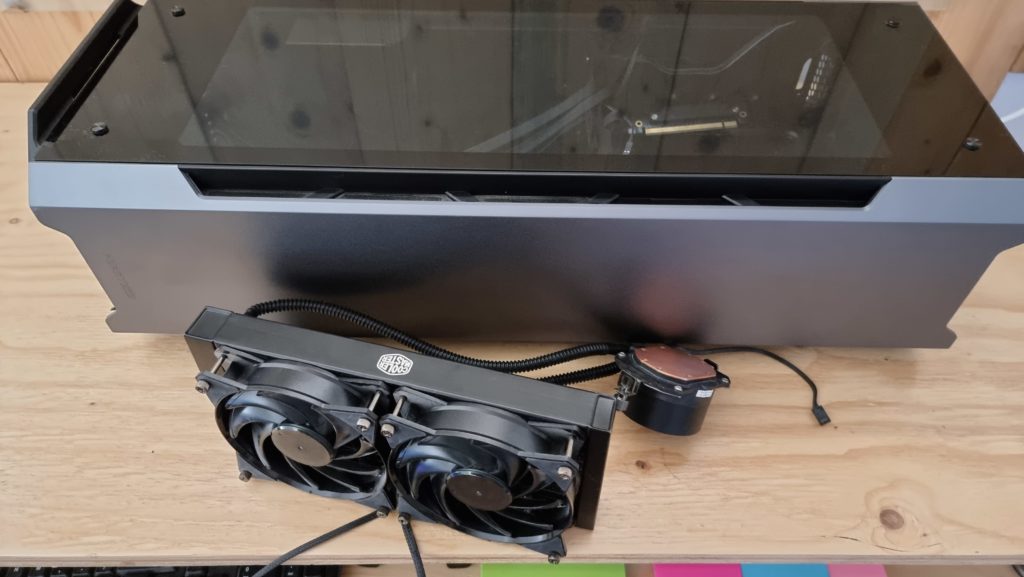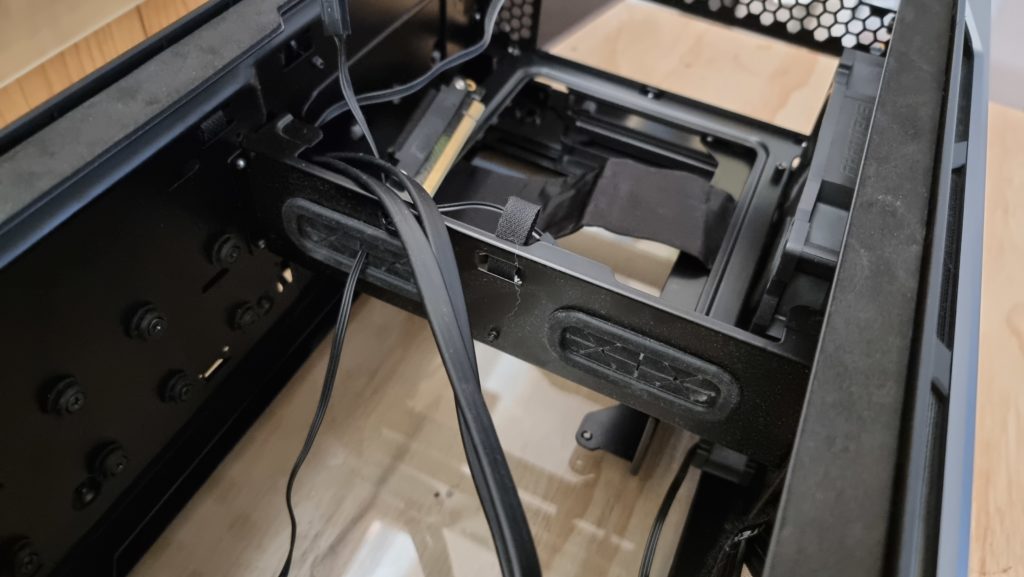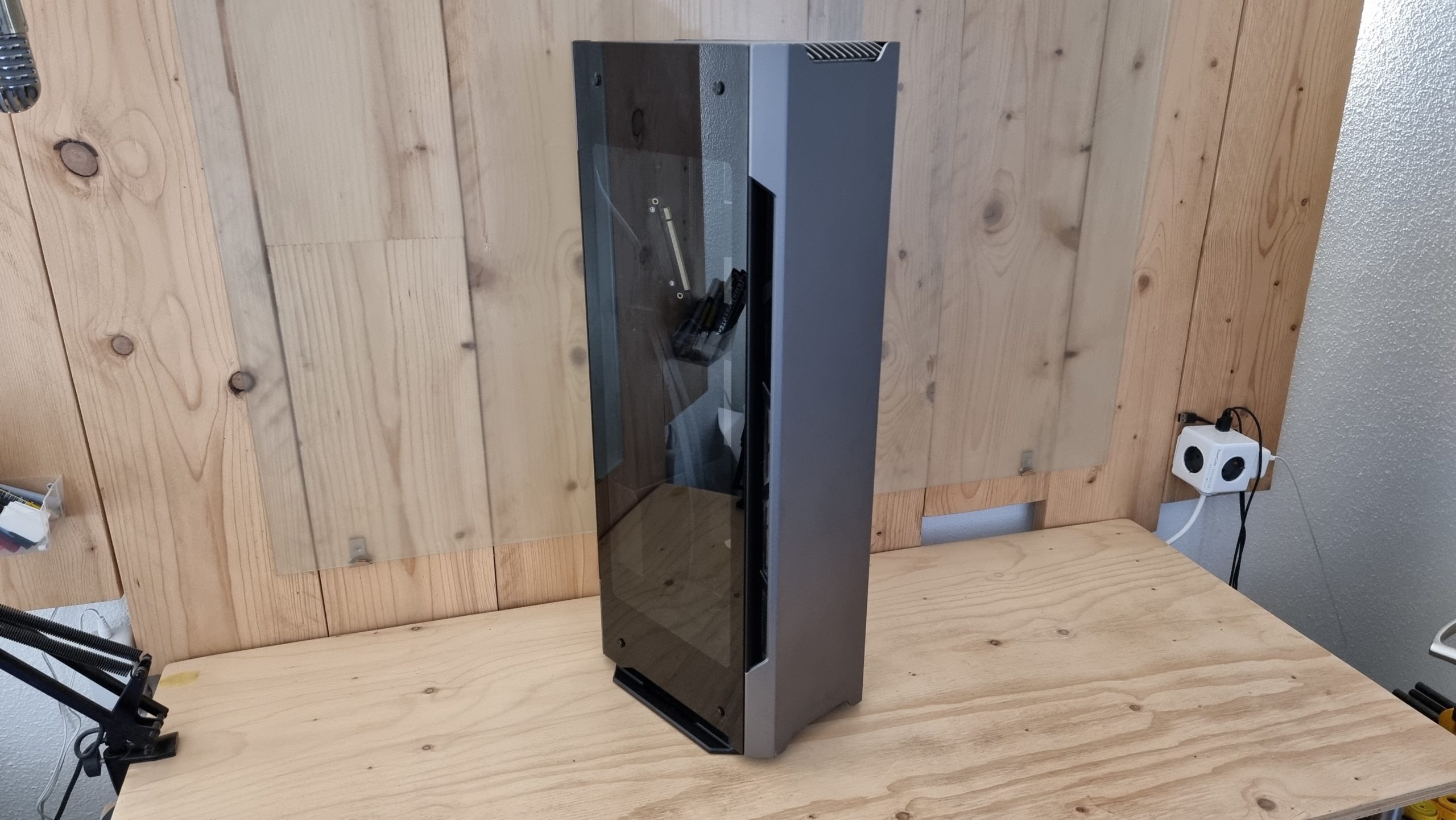Ever since I first saw this case, I’ve wanted to do a PC build with it. The Phanteks Evolv Shift X is a striking Small Form Factor (SFF) case that costs a pretty penny. However, the PC case, although expensive, isn’t entirely to blame. The parts of the Phanteks Evolv Shift X it requires are the biggest bottleneck.
It is a challenging build to do because of various concerns. Airflow, component choices, and cable management being a few. It doesn’t require an SFX power supply, but I recommend airflow from the bottom. You also need a mini-ITX motherboard which usually is more expensive and has a minimal upgrade path.
Though the Phanteks Evolv Shift X’s frame might be tall and quite open, it is quite the glass sandwich. Unfortunately, this means you cannot chuck in just any cooler. Unless leaving out one of the glass panels or suffocating your CPU sounds like a good plan.
Why not throw in an AIO liquid cooler?
With the airflow challenges apparent, I want to make it just that bit harder for myself. I really want to make it an air-cooled build. My reasoning is based on reliability. I have a spare 240mm AIO lying around. But I cannot install it in the Phanteks Evolv Shift X without installing it badly with the pump above the radiator and the hoses on the top. This is about the worst way for an AIO to be installed because water will naturally go to the highest point in the system. Thus, probably destroying the pump sooner rather than later.

If you want an AIO in your system. Ideally, make the top of the radiator the highest point in the system. However, if that isn’t possible, make sure the hoses leading to the pump block are at the bottom of the radiator. This way, air will accumulate at the top of the radiator and stay out of the pump block.
But this is why I choose reliable air cooling, even though it makes airflow even more critical. Sadly the BeQuiet Pure Rock 2, which has been in my current HTPC for about two years now, is way too large for this case. So this it’ll have to be replaced.
The video card I have planned for this build isn’t perfect for this build either. Blower-style coolers are the preferred solutions for this type of mostly glass case. This means the Phanteks Evolv Shift X’s airflow needs to be even better.
Phanteks Evolv Shift X’s Airflow is a challenge
This means we have found yet another challenge. The case doesn’t have that many places for other fans. One 140mm fan can be placed at the bottom of the case, and one 140mm fan be placed at the top front side of the case at the mainboard and CPU.
I need to test the best setup for the fans; now, I think I’m going with a positive airflow setup and treat the bottom and top part of the case as different airflow zones. In theory, this fits my use-case best, with this case being in the living room with 2 dogs.
Just about every part of the case has filtered intakes and meaning with a little bit of maintenance, I can keep dog fur out of the setup. Convection and the push from the bottom fan will expel heat out of the top of the case. The cross-stream from the front fan will provide extra airflow to the components and then crash mostly up the back part of the case and move up with the bottom airflow.

I consider it mainly two airflow zones due to the divider in the middle of the case, being the motherboard tray. Because of this, I think an exhaust fan in the top would not be as beneficial as another intake. But I might be mistaken.
SFF cases can be pretty, but they really need more planning than your run-of-the-mill ATX case to conclude this planning post. So if you do not like a challenge, then a point like the Phanteks Evolv Shift X really isn’t for you. But then again, if it isn’t a challenge, why would you even do it?
In the next blog post, I’ll share the parts list of this build and the expected bill of materials if you want to create this exact build with new parts.


0 Comments